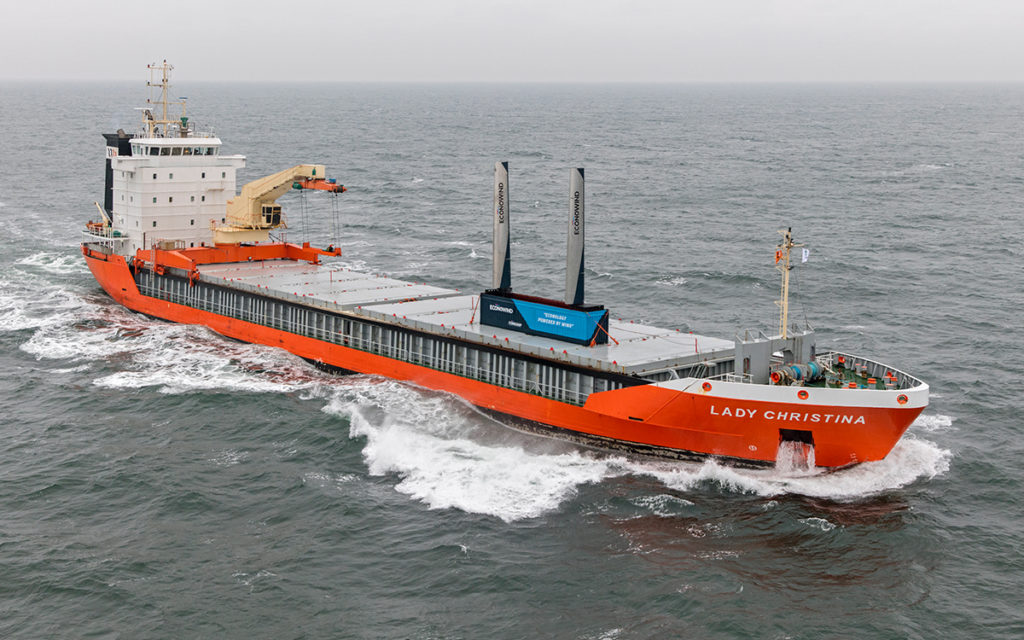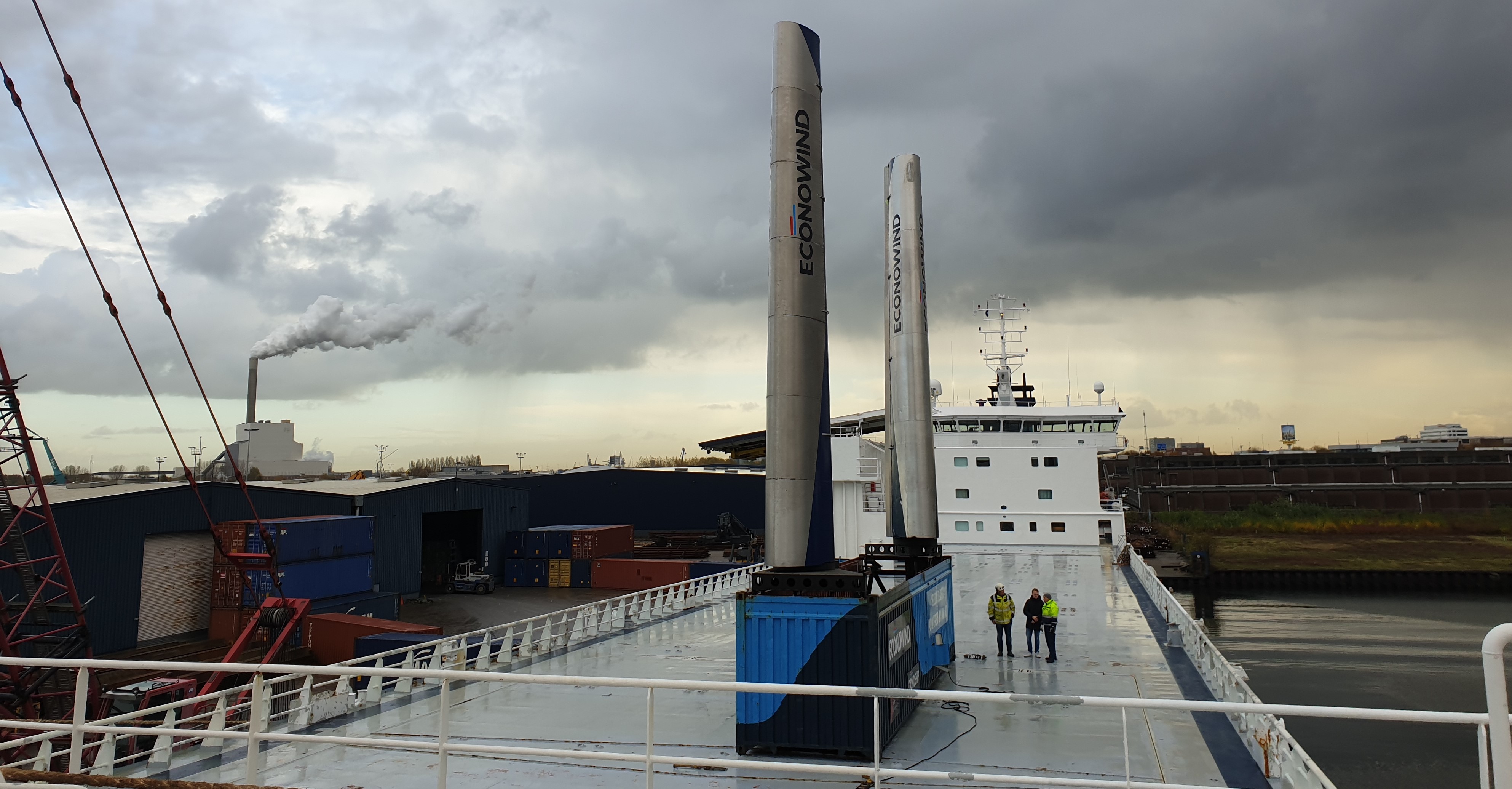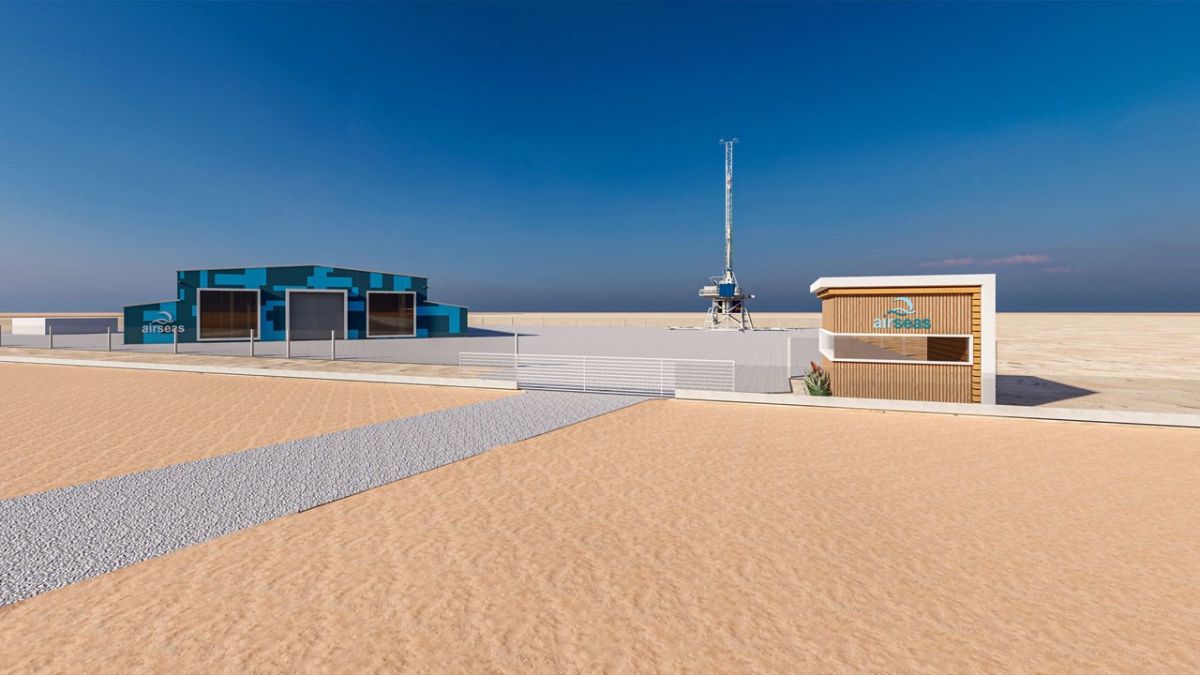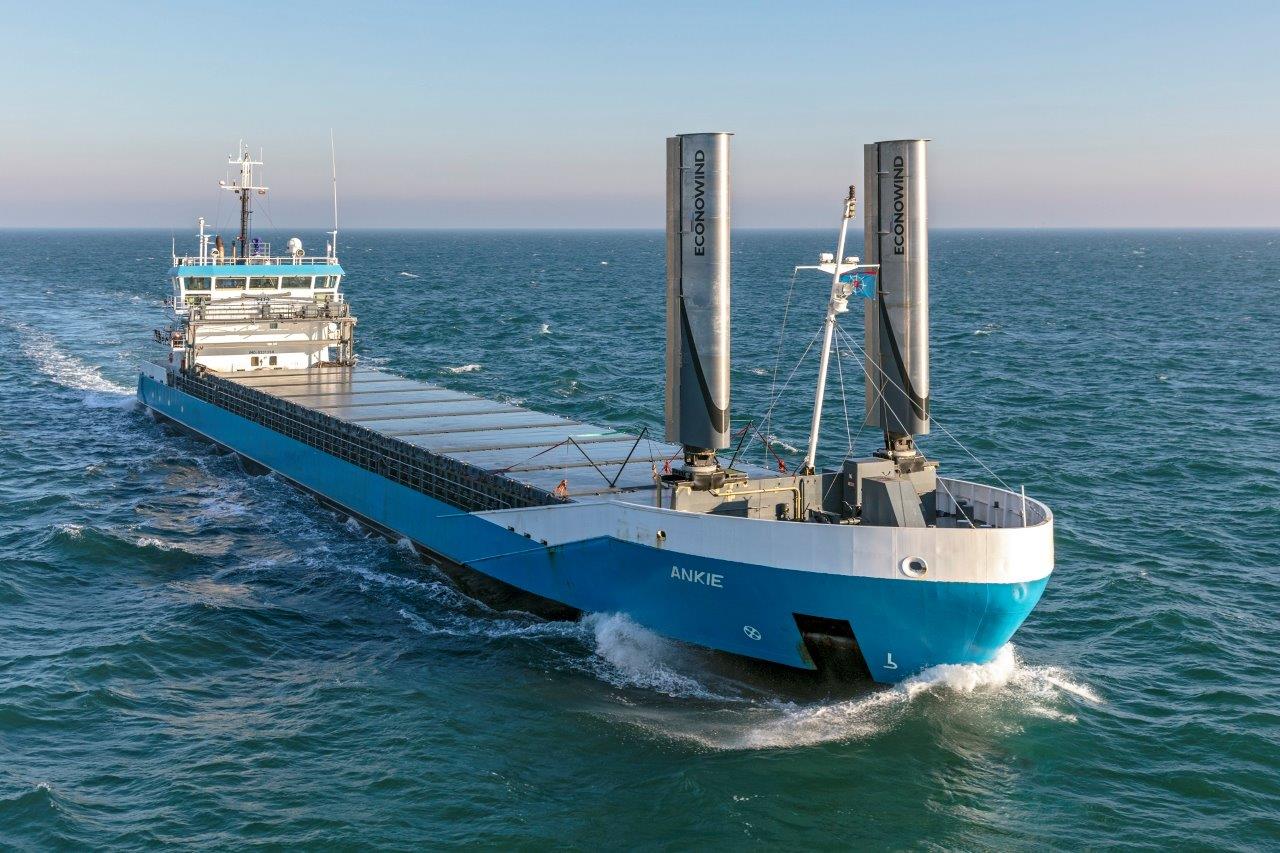DFDS has put a wind propulsion-in-a box solution on a vessel to see what the difference is in fuel consumption
It is the simplicity and ease with which the Econowind system can be placed on a ship’s deck that attracted shipowner DFDS to test the wind propulsion system, designed and built by Netherlands ship designer Conoship International.
The system is a pair of rigid aluminium wingfoils fitted inside a normal 40’ container. The box has been secured onto the deck of Lysbris Seaways using normal twistlocks and lashings, and the operation is as simple as any seafarer would want it. When the captain wants to unfold the sails he or she presses a button on a bridge computer and they open up and automatically angle for wind.
Lysbris Seaways operates in the North Sea between Norway, UK and the continent so these trials will likely see plenty of wind, although the operations of this trial unit will still require an engineer on deck to operate it.
Poul Woodall, DFDS director of environment and sustainability, told Fathom World the system will be used on the vessel for two months to get data and then removed and possibly placed on the deck of another ship.
“This is what I like. There are no structural changes to the ship and it weighs lass than 10 tonnes,” he said. “We can put it on one ship and route and get the data and then put it on another. It is plug-and-play”
And once it has the data the company can make a decision whether it wants to buy the system or something similar that Econowind has available.
Econowind
Frank Nieuwenhuis became co-owner in Econowind two and a half years ago to bring the idea that had been developing since 2009 to reality. An accomplished innovator and mechanical engineer, he was able to bring the project to the stage where a test unit was built with European funds and find its way onto Lady Christina for trials last year.

The Econowind system consists of wing-foils, which the company calls Ventifoils. Nieuwenhuis believes these are better suited for smaller vessels between 3,000 tonnes and 10,000 tonnes and that may roll a lot – a condition that he says does not favor flettner rotors. Also, Nieuwenhuis said, he knew that the system would need to be foldable to enable it to be out of the way when in port.
When he came onboard the Econowind project he said he was looking for a project that was technologically feasible and had a way into the market. And the fact Econowind was developed by a ship designer offered that latter avenue.
The company also has a more permanent Ventifoil system design which will be welded onto a ship’s deck, which is again retractable or foldable, and a flatpack design for a flatpack system where each foil is in its own housing, making it much easier for vessels to move around deck with their own smaller cranes.
The larger ventifoil system already has its own customer and the first two foils, which are bigger than can be fitted into a 40’ container. these first permanent ventifoil systems will be installed on MV Ankie, a 3,600 dwt short-sea general cargo vessels owns by van Dam Shipping before the end of this year.
These foils will be 10 meters high like the containerised versions, but the plan is to extend them by a further 6m after tests. The company has said payback on fuel savings will be three years.
Fuel savings
Fuel saving claims in the wind assist industry vary tremendously, but partly because the savings can be quite dramatic at one moment, such as when the wind blows from the right direction and strength for the vessel and can be zero at others (too strong or no wind). Nieuwenhuis says that while at its best the crews may see fuel consumption drop by up to 30%, the reality is that overall it will be around 10%.
For DFDS these two months of tests are all about getting the data. Woodall is adamant that the industry must work towards its decarbonisation goals collaboratively and is keen that data from tests such as these should be made available.
He also points to the ease with which vessels could install multiple units on decks and move them around to get maximum results.
Nieuwenhuis points out that when the systems are opened up, while the vessel is underway, the effect is immediate, with the thrust increasing the speed of the vessel. In order to save money on fuel the vessel’s engines can be run at a reduced load, with lower RPM, to maintain a given speed.
The technology
The Econowind system is based on the original idea of the turbosail concept developed and patented by Jacques-Yves Cousteau, who used them to power his expedition ship Alcyone.
With the patent expired, Econoship was able to begin its own foray into commercializing the solution. The ventifoil is similar to an aeroplane’s wing. It is mounted vertically and fitted with an ovoidal tube which pulls in air, increasing the depression on one side of the sail. The difference in air pressure is what creates the thrust.
Learning curve
The tests Econowind did on Lady Christina and then on a subsequent voyage on an AEL vessel across the Atlantic provided an opportunity to work out any operational niggles and changes – such as installing a manual hydraulic system to enabling the foils to be stored if there is a system fault, and understand the ability to quickly ship units off the ships and have them repaired and then returned onboard.
Cost and finance
But as with any novel product in the market the costs are what owners will be looking at before the savings. While Econowind is selling each unit, though offering owners an opportunity to rent a container for a couple of months just as DFDS is doing to see if they like the system, it is looking to launch a leasing company for owners that want to take that route, but the intention is also to build up a large number of containers which are exchangeable when units need maintaining.
Cost is key for Econowind said Nieuwenhuis, whether for the container, the flat-pack design, or the permanent installations. The simplicity of the design, he believes, make them cheaper than flettners, even though he is quick to point out that flettner rotors are suitable for larger vessels
Econowind has also coined its own phrase – Econology- to identify with the need for a technical solution to be economical on the pocket as well as giving results. However Nieuwenhuis points to the economies of scale. Once the orders come in then the units will become much cheaper to produce.

































